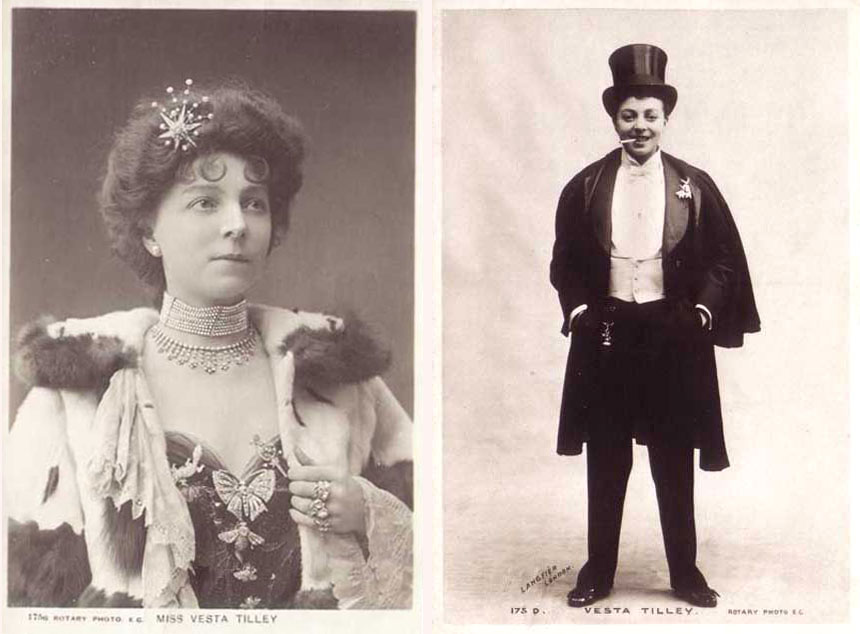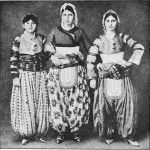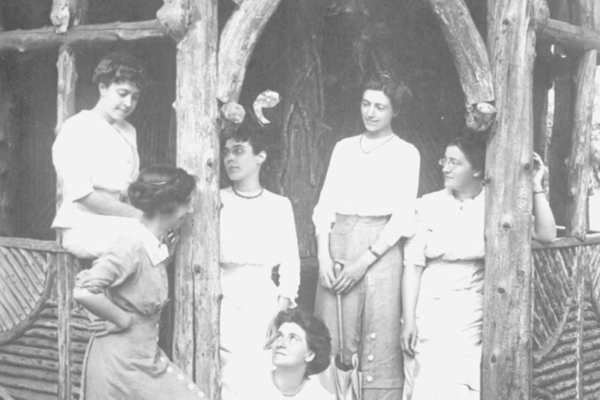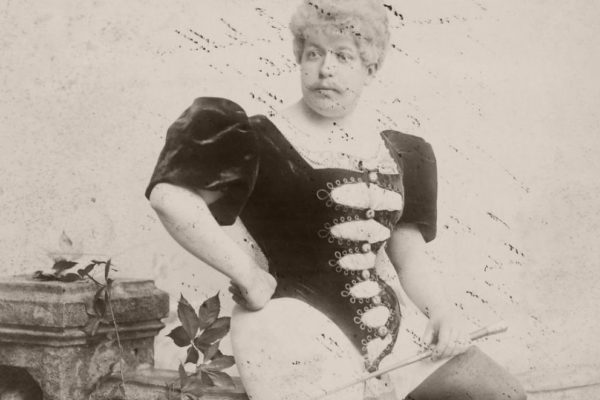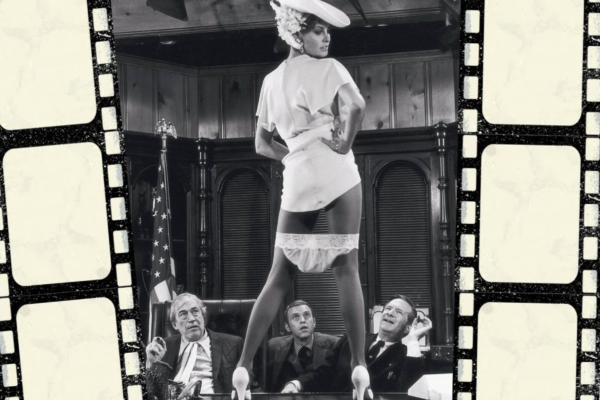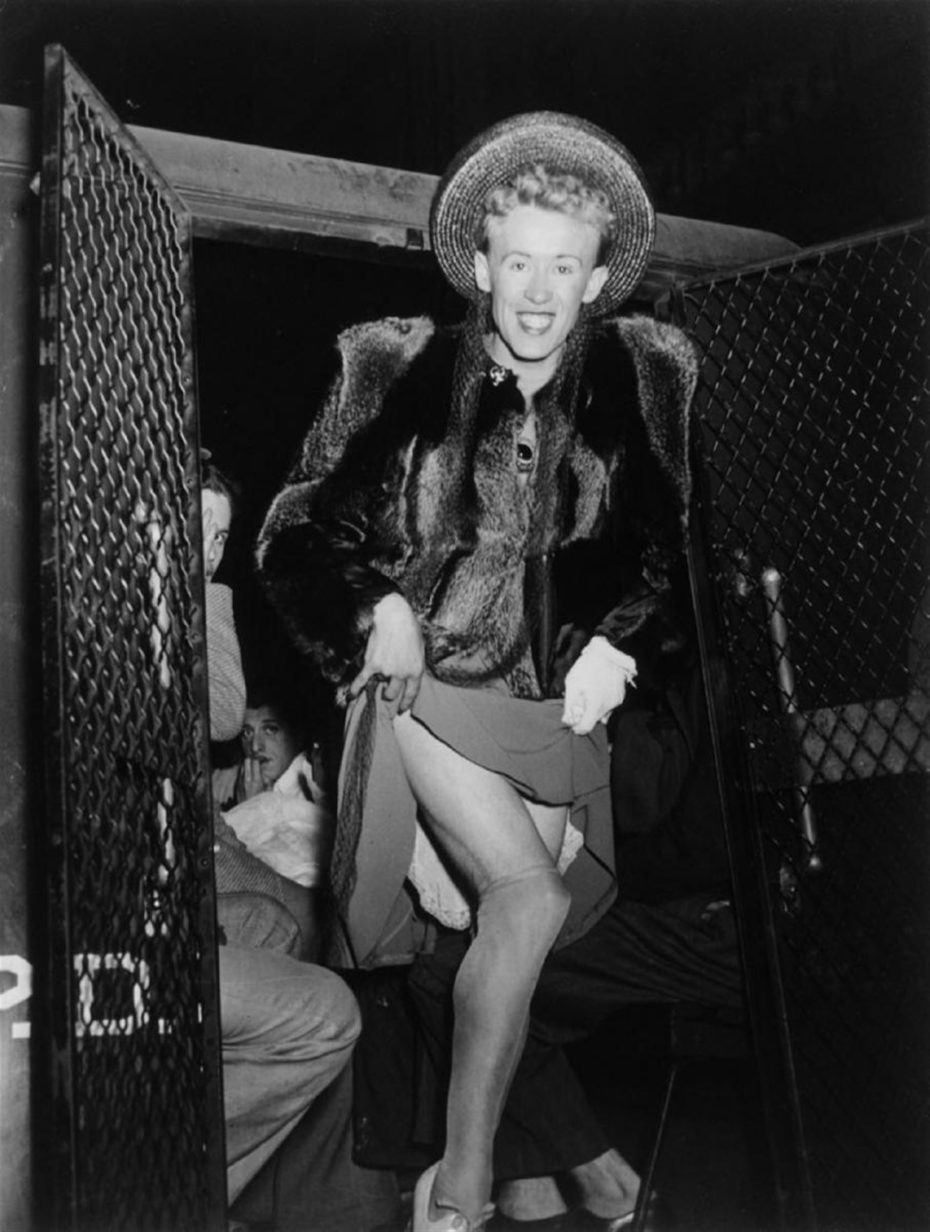
A man is arrested for cross-dressing, 1939 ©Arthur Fellig
We seem to assume that if our ancestors knew half of the things our generation was getting up to today, they would be rolling over in their graves. But what if those same elders had plenty of secrets of their own? Greek, Pagan and Hindu mythology all have a long history of cross dressing that can be seen in their folklore, literature, theatre and music. It was seen in the 6th Century of China with the story of Mulan in which a young girl dresses like a man to take her fathers place in the army (later turned into a Disney movie). Between the mid 19th century and World War I, cross dressing was banned in 45 cities in the United States and a number of other countries around the world … and yet that didn’t seem to stop this lifestyle from existing in the shadows…
Things first started to change when the Christian Church deemed the practice of cross dressing taboo. Deuteronomy 22:5 states, “A woman must not wear men’s clothing, nor a man wear women’s clothing, for the Lord your God detests anyone who does this”. Building upon this, they also decided it went hand in hand with alcohol consumption, underground brothels and prostitution. The church set out on a mission to convince the rest of society to believe in their views on the matter.
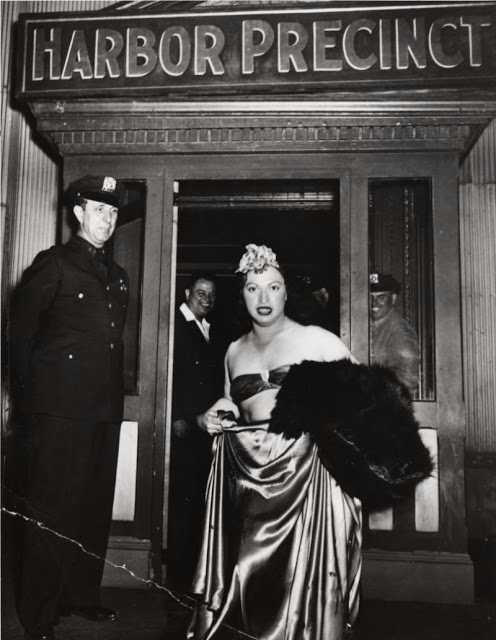
© Arthur Fellig / International Center of Photography Source
“It wasn’t really about the clothing, The laws were passed to police indecency and try to create a more sexually respectable city, and clothing was just a way to get to that.”
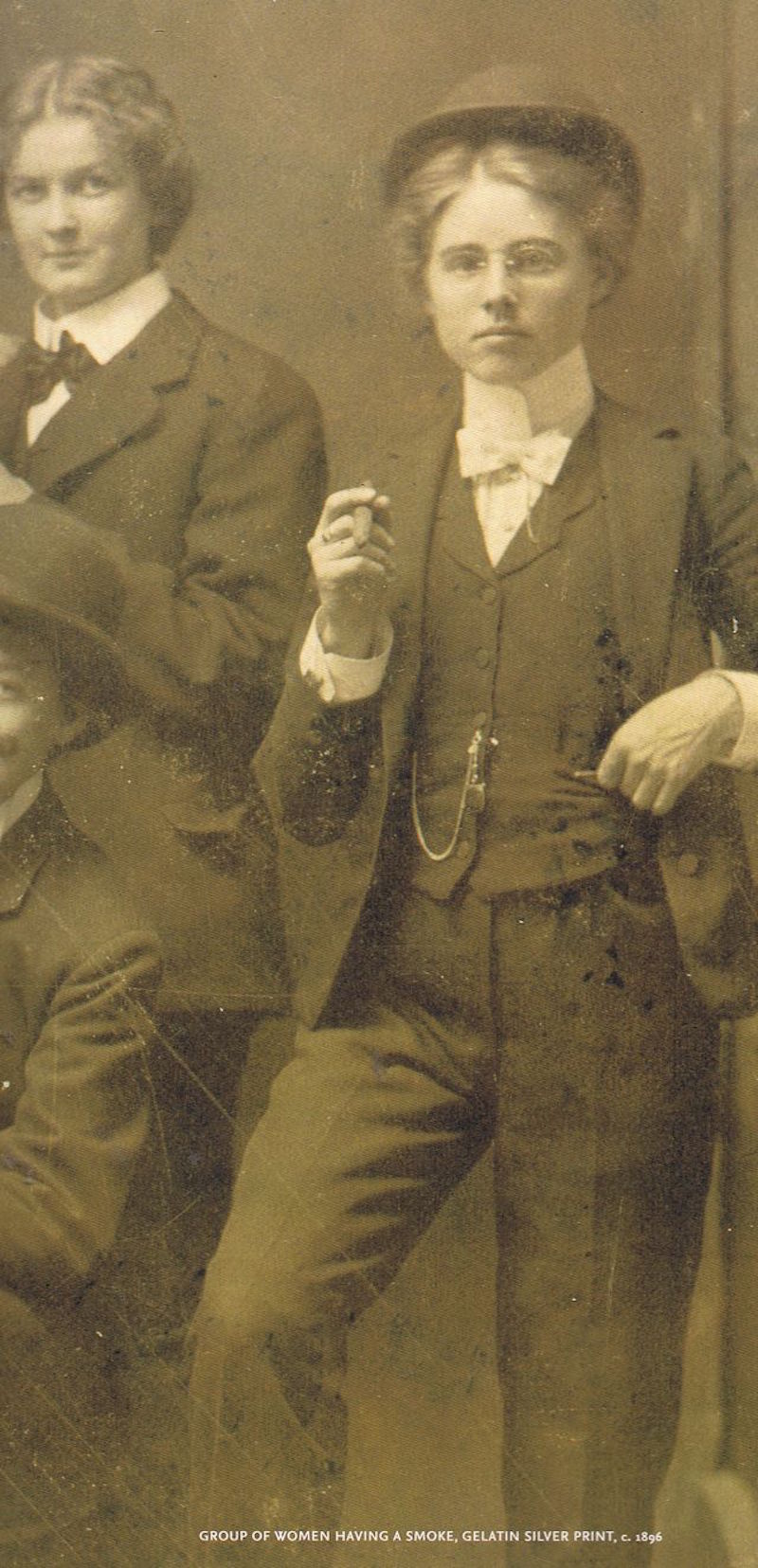
In the early 1900’s, women were beginning to leave the home to work in factories and society. Cross dressing was seen as something that posed a social threat to the traditional gender norms. Men were afraid of women gaining too much “self-esteem” and forgetting their place (in relation to men). Some cultures around the world still prohibit women from wearing traditionally male clothing. Ironically, in France, women were not officially allowed to wear trousers until 2013, after a 200 year-old law was revoked.
However, when men cross-dressed, it was a different story. Their gender roles were not the main focus, it was a question of sexuality. Homosexuality was also a subject of taboo and illegal in many parts of the world.

Let’s meet a glamorous cross dressing pair who took Victorian England by storm in the late 1800’s. Fanny and Stella, also known as Frederick and Ernest, who were notorious for their wild nights out and open sexuality. Stella’s most famous lover was Lord Arthur Pelham-Clinton who just happened to be the son of the Duke of Newcastle.
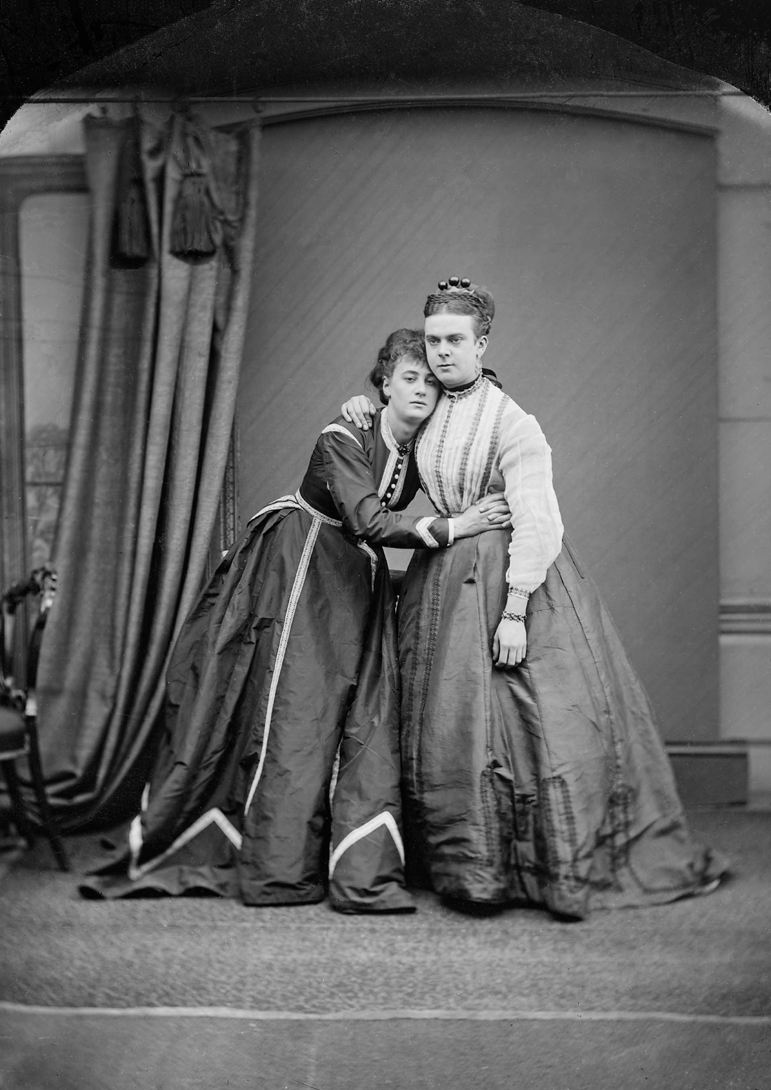
Stella was described as “a beautiful, almost aristocratic, young woman who showed flashes of an innate, and most decidedly un-whorelike, dignity and grace.” Mrs Fanny Graham, too, “was clearly a woman of some education and breeding, and was certainly very far removed from your common-or-garden whore.”
–Fanny & Stella by Neil McKenna (Faber & Faber)
One night, upon leaving a West End theatre, they were arrested and charged on the act of homosexuality and conspiracy.
Their trial was more of a spectacle than a serious legal battle. Hundreds of people came to see the famous pair taken into custody. Ernest’s mother even testified that everyone knew her son went by the name of Stella and enjoyed dressing up as a women. It was hard to convince the jury that Stella and Fanny were out to cause serious harm, so they were acquitted.
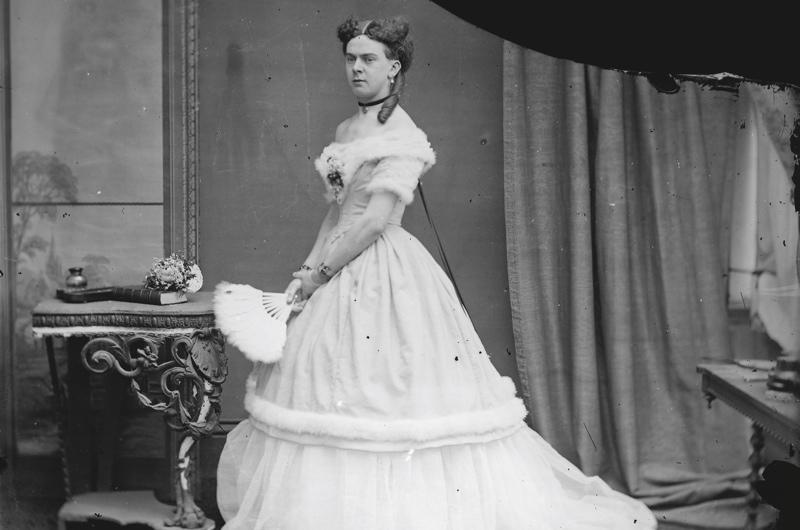
One newspaper said later that she was ‘charming as a star’, another christened her ‘Stella, Star of the Strand’. And despite all the opprobrium that would later be heaped upon her, despite all the mud that would be slung at her and all the mud that would stick to her, she never lost the mysterious aura of a great and stellar beauty.
Fanny and Stella are just two names that went down in history as pioneers of gender fluidity, but many more had to pave the way for this form of self-expression that is accepted today… They fought for the right to be who they were and who they wanted to be while looking oh so glamorous along the way.
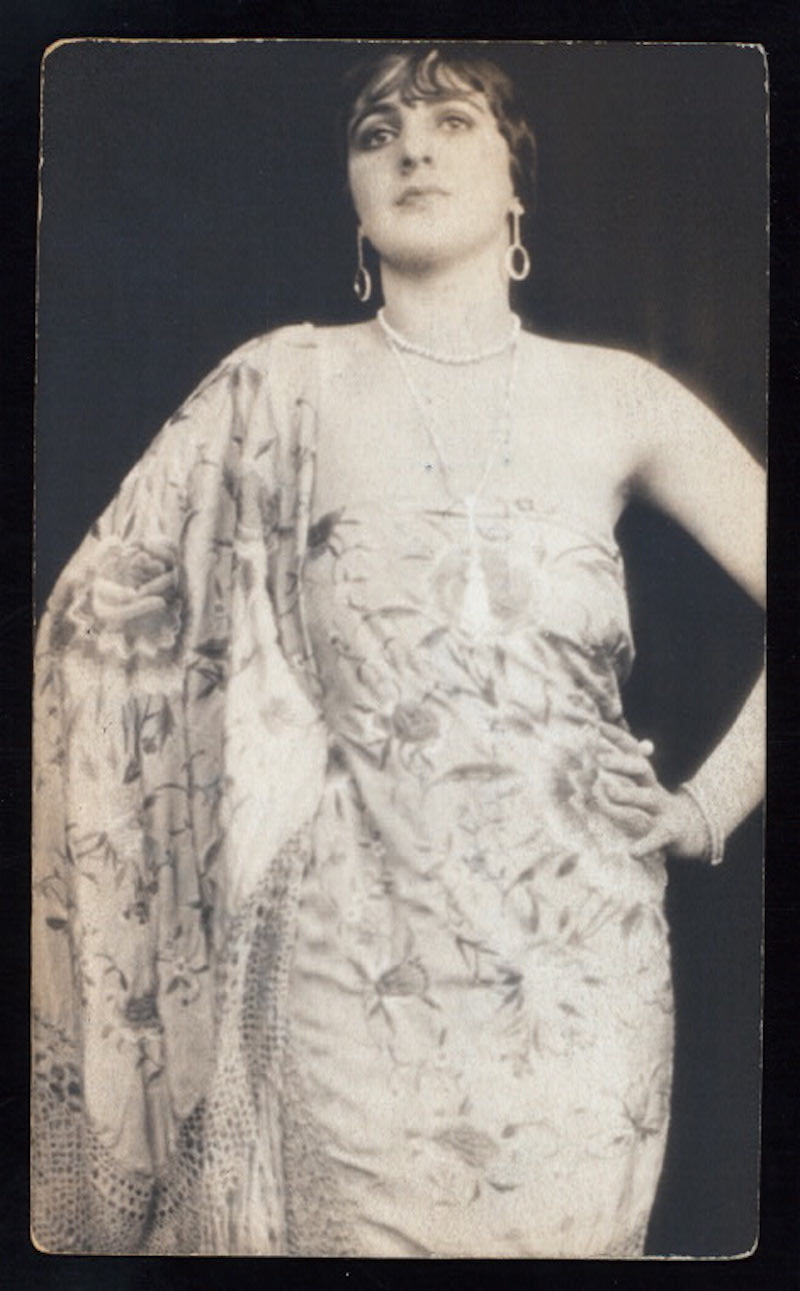
Harry S Franklyn © NYPL
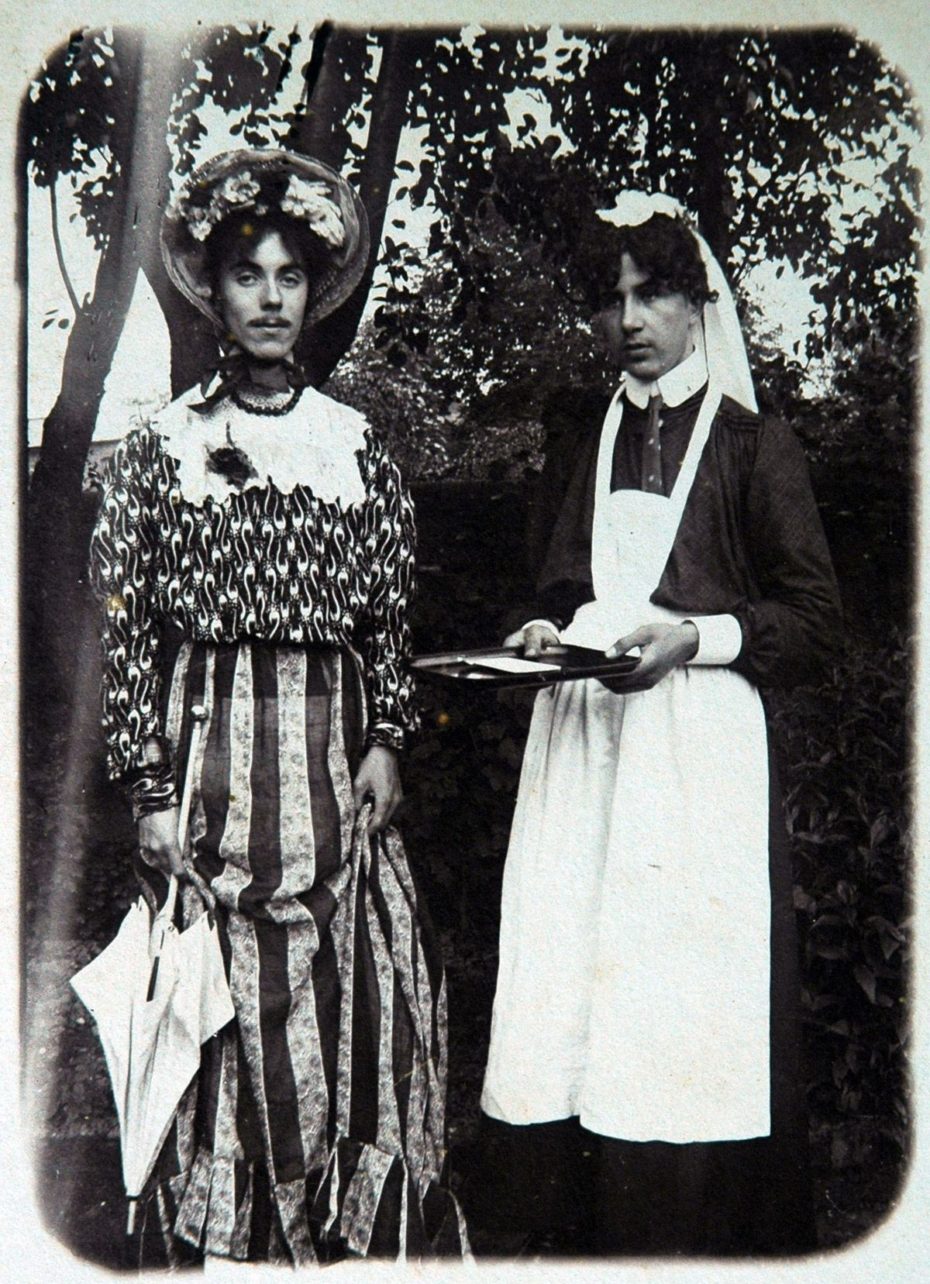
Circa 1900 © PYMCA
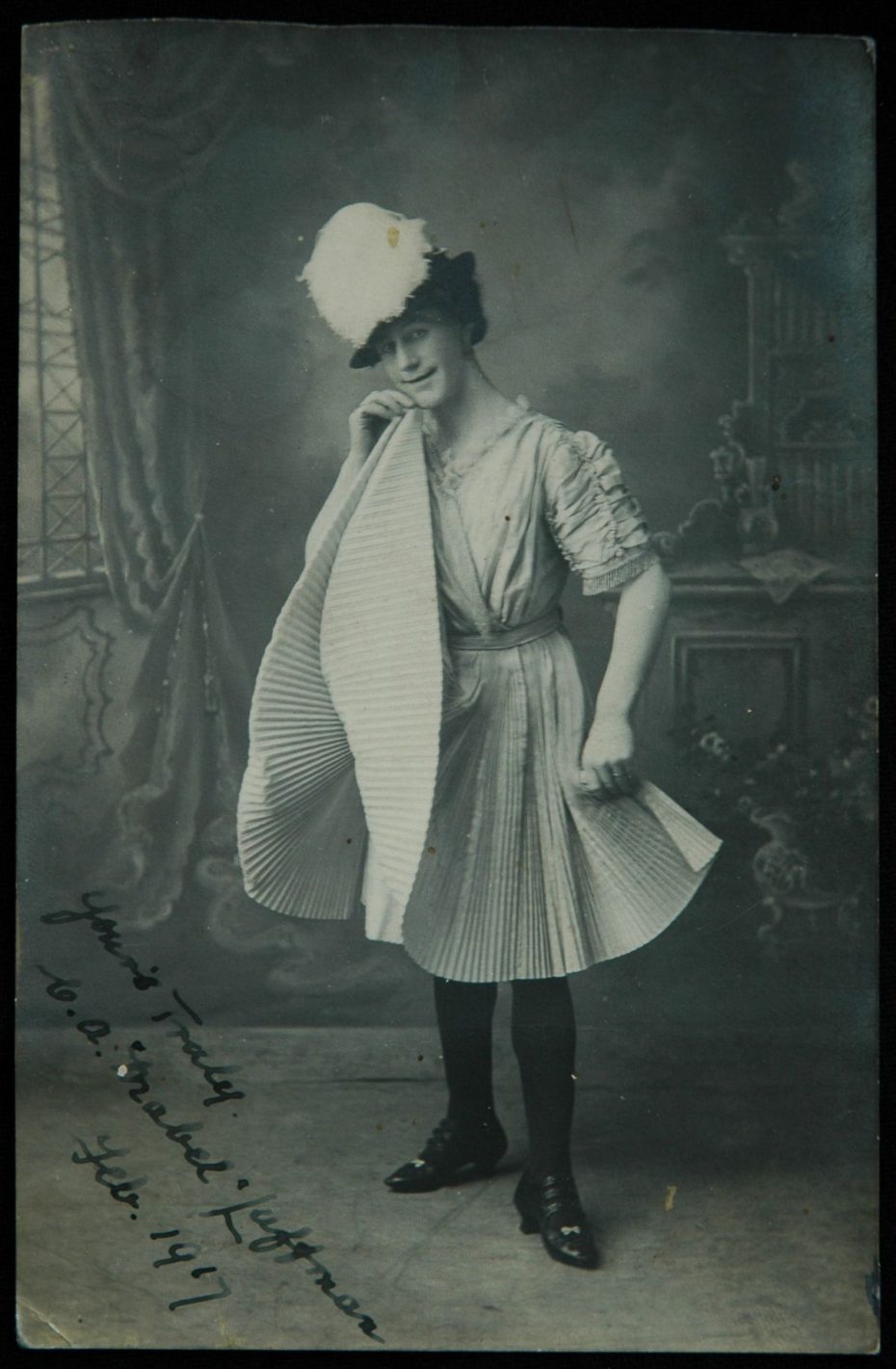
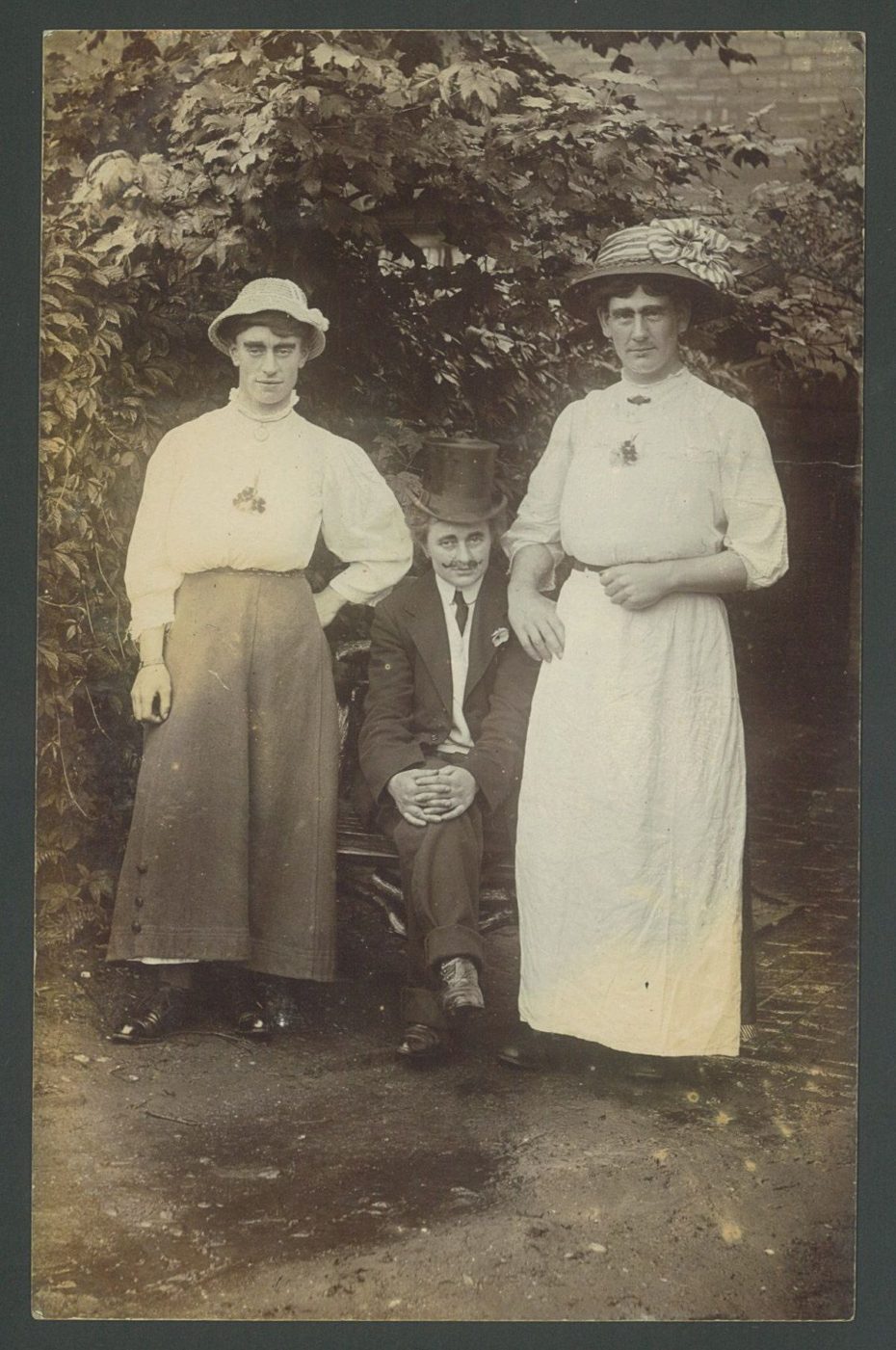
Circa 1900 © PYMCA
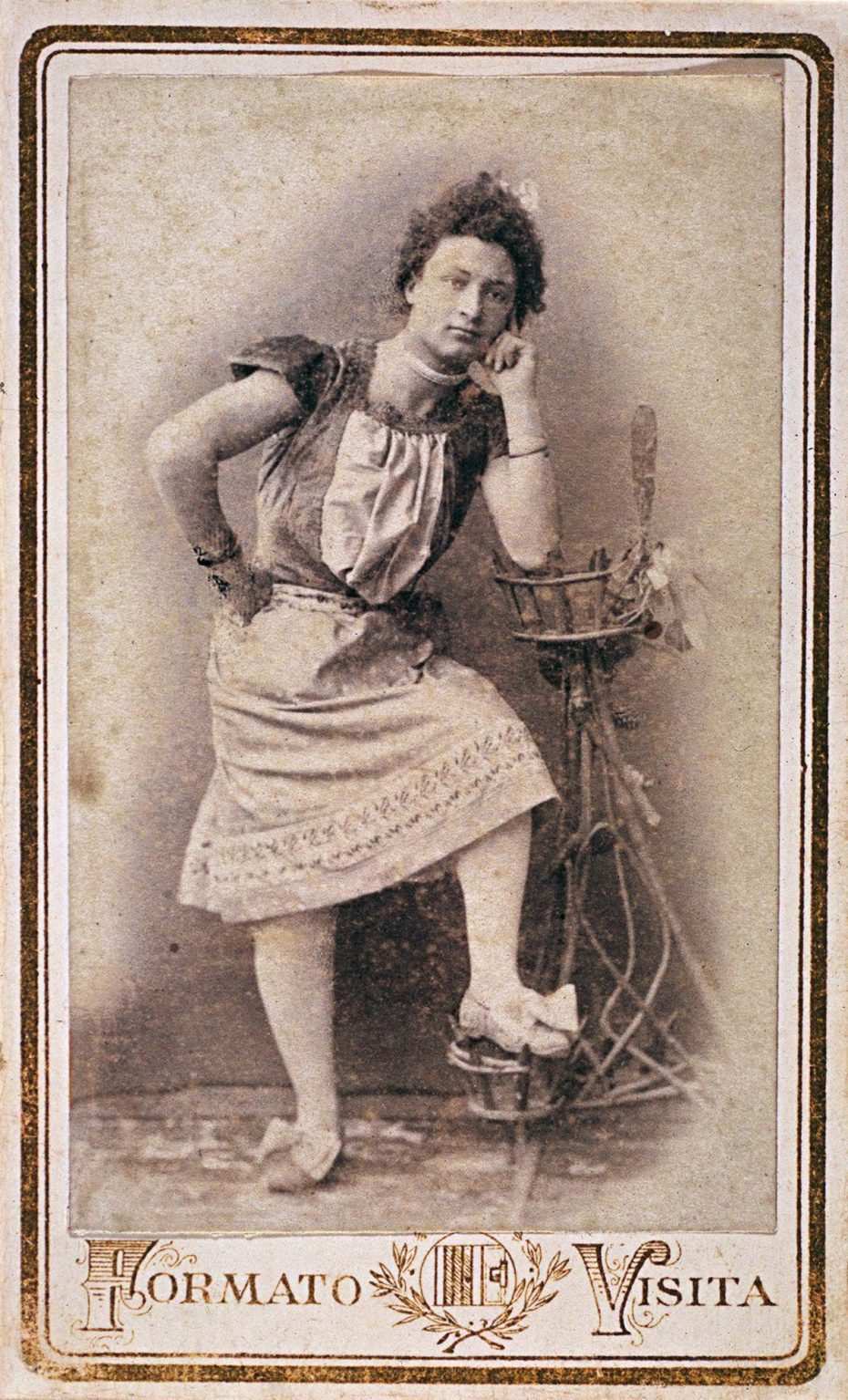
Circa 1885 © Fototeca Gilardi
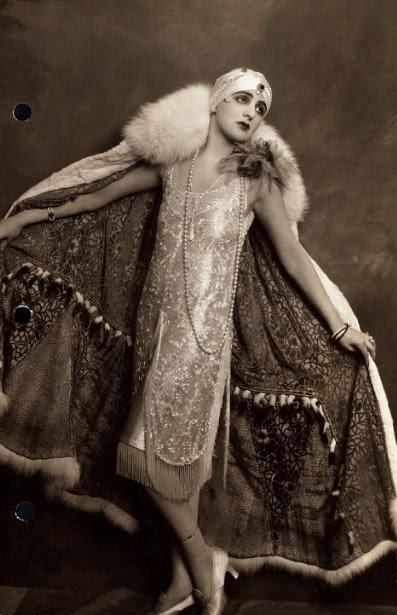
Harry S. Franklyn Cicra 1920
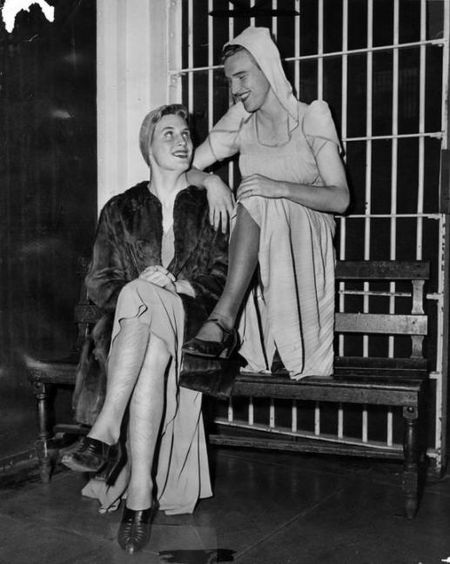
Via LittleThings
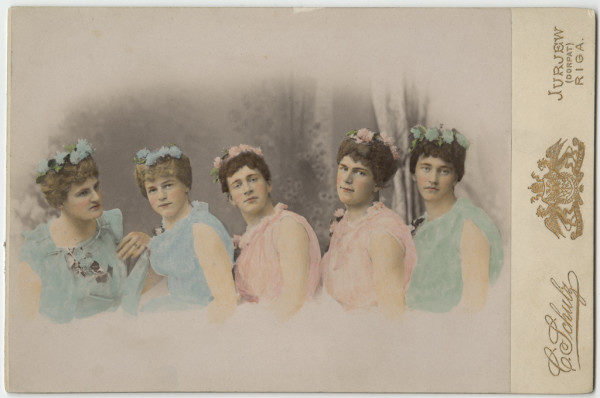
Via LittleThings
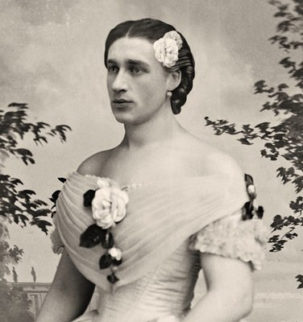
Via LittleThings
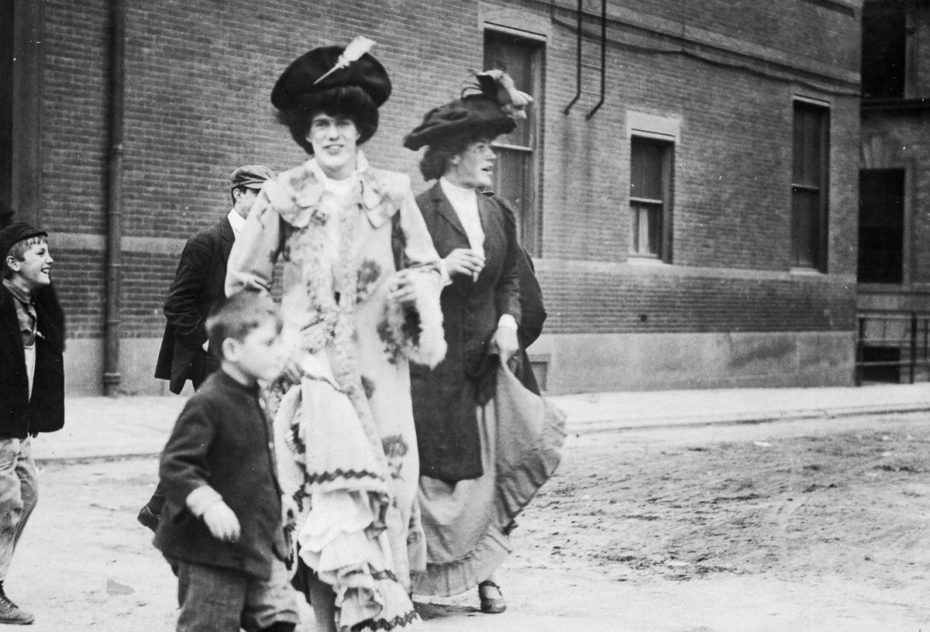
Harvard Students in 1915 © Paul Thompson
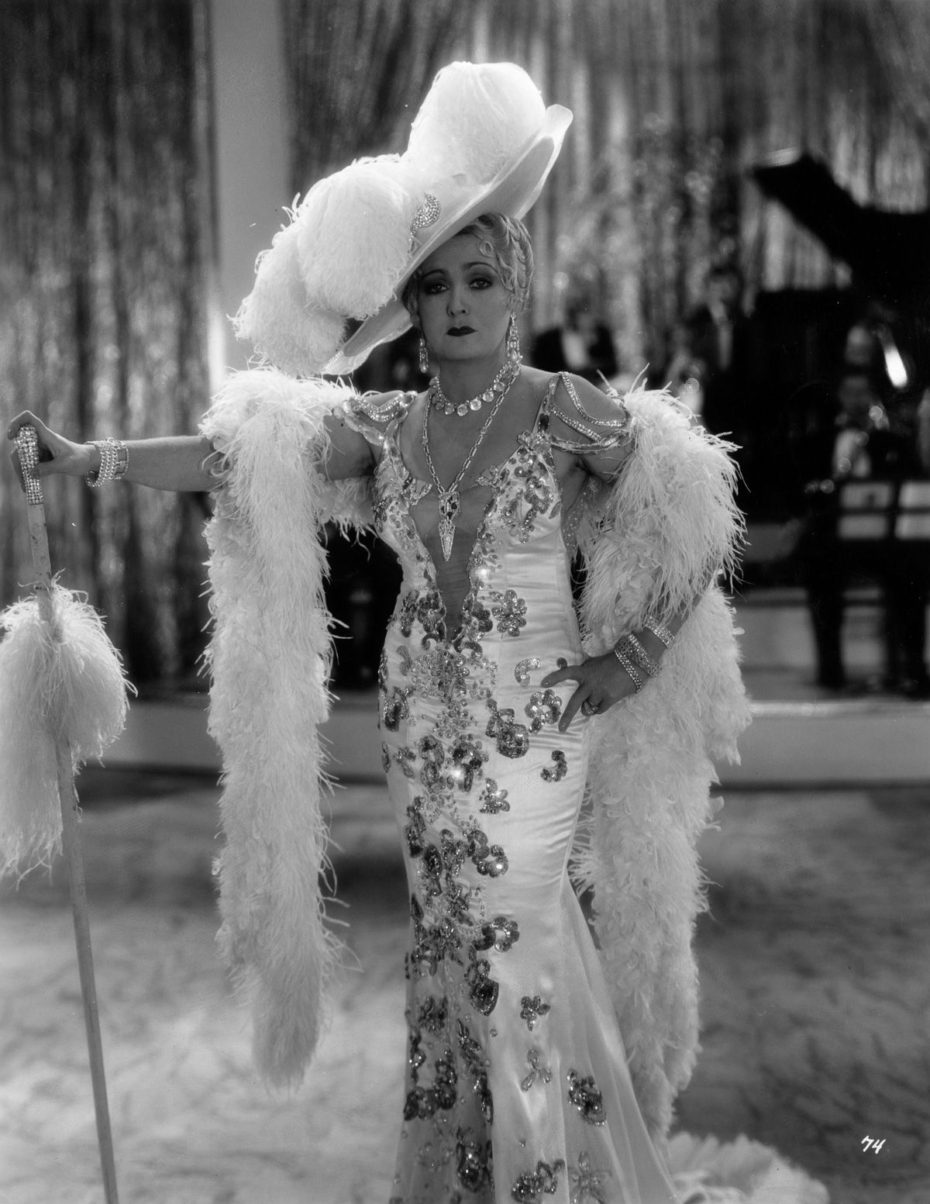
Famous cross-dresser Bert Errol in full drag and makeup, 1930s



